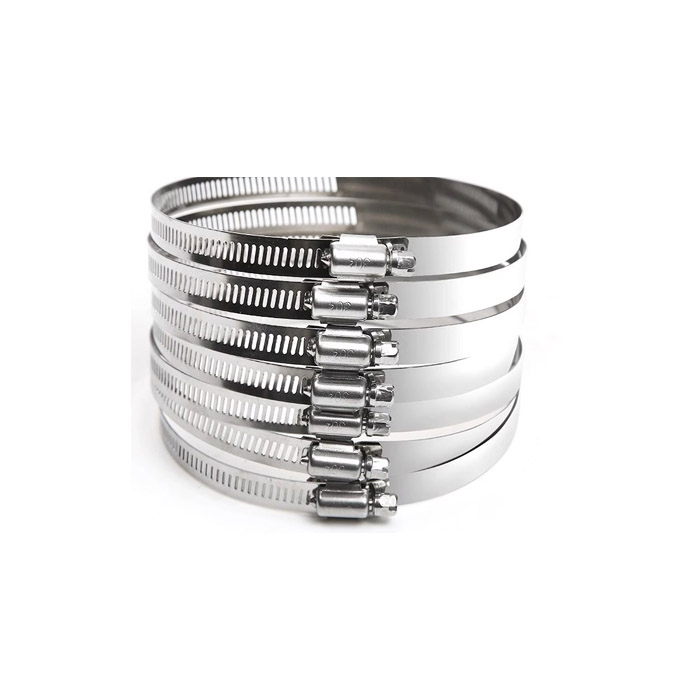- Phone:+86-17331948172 +86-0319-8862898
- E-mail: inquiry@puxingclamp.com
ਨਵੰ. . 10, 2024 09:52 Back to list
Effective Solutions for Duct Hose Clamps in Various Applications and Industries
Understanding Duct Hose Clamps A Comprehensive Guide
Duct hose clamps are essential components used in various industries and applications to secure hoses, tubes, and ducting systems. Their primary function is to hold the hoses tightly in place, preventing any leaks or disconnections that could lead to reduced efficiency or even system failure. This article delves into the types, uses, advantages, and installation practices associated with duct hose clamps.
Types of Duct Hose Clamps
Duct hose clamps come in several types, each designed for specific applications. The most common types include
1. Screw Clamps These clamps feature a screw mechanism that allows users to tighten or loosen the clamp easily. They are versatile and suitable for a variety of hose diameters.
2. Spring Clamps Made from spring steel, these clamps automatically adjust to different hose sizes, providing a firm grip without requiring manual tightening. They are particularly useful in applications where hoses may expand or contract due to temperature changes.
3. Worm Gear Clamps A subset of screw clamps, worm gear clamps have a metal band with a threaded screw that tightens the band around the hose. They are popular in automotive and industrial applications due to their robustness and ease of installation.
4. T-Bolt Clamps These clamps provide a strong hold and are often used in high-pressure environments. They consist of a band and a bolt system that distributes clamping force evenly, reducing the risk of hose damage.
Uses of Duct Hose Clamps
Duct hose clamps are utilized in a range of applications, including
- HVAC Systems In heating, ventilation, and air conditioning systems, duct hose clamps secure the ducting and prevent air leaks, ensuring optimal efficiency and performance.
- Automotive Industry They are commonly used to secure vacuum hoses, fuel lines, and air intake systems, contributing to overall engine performance.
- Agriculture Farmers use duct hose clamps to secure hoses in irrigation systems and other agricultural equipment, ensuring effective water delivery and preventing leaks
.- Industrial Applications In manufacturing settings, duct hose clamps are used in various machinery and assembly lines, where they help maintain the integrity of pneumatic and hydraulic systems.
duct hose clamp

Advantages of Using Duct Hose Clamps
1. Leak Prevention By securely fastened hoses, duct hose clamps help prevent leaks, which can lead to losses in efficiency and costly repairs.
2. Durability Constructed from high-quality materials like stainless steel and durable plastics, duct hose clamps are designed to withstand harsh conditions and resist corrosion, making them suitable for both indoor and outdoor use.
3. Ease of Installation Most duct hose clamps can be easily installed with basic tools, making them accessible even for DIY enthusiasts. This simplicity saves time and reduces labor costs.
4. Adjustability Many types of hose clamps can be easily adjusted to fit various diameters, providing flexibility in applications involving different hose sizes.
Installation Practices
Proper installation of duct hose clamps is crucial for optimal performance. Here are some best practices to consider
1. Select the Right Clamp Choose a clamp that matches the hose diameter and is suitable for the specific application. Overly tight or loose clamps can lead to damage or leaks.
2. Clean the Surface Before installation, ensure that both the hose and the fitting surfaces are clean and free from debris or contaminants to ensure a proper seal.
3. Even Tightening When using screw clamps, tighten the clamp evenly around the hose to ensure a uniform grip. Over-tightening can damage the hose, while under-tightening may lead to leaks.
4. Regular Inspection Periodically check and inspect clamps for signs of wear or damage, especially in critical applications. This practice can help preemptively address issues before they escalate.
Conclusion
Duct hose clamps play a vital role in ensuring the integrity and performance of various systems across multiple industries. With various types available, understanding their applications and proper installation techniques can enhance efficiency and safety. Whether you're in HVAC, automotive, or agricultural industries, investing in quality duct hose clamps ensures that your systems remain reliable and efficient for years to come.
-
Durable Hose Clamps with GPT-4 Turbo Tech | Secure Sealing
NewsJul.31,2025
-
Large Stainless Steel Adjustable American Type Hose Clamp - Hebei Pux Alloy Technology Co., Ltd|Corrosion Resistance&High Breaking Torque
NewsJul.30,2025
-
Large Stainless Steel Adjustable American Type Hose Clamp - Hebei Pux Alloy Technology Co., Ltd
NewsJul.30,2025
-
Large Stainless Steel Adjustable American Type Hose Clamp - Hebei Pux Alloy Technology Co., Ltd|Corrosion Resistance&Industrial Applications
NewsJul.30,2025
-
Large Stainless Steel Adjustable American Type Hose Clamp-Hebei Pux Alloy Technology Co., Ltd|Corrosion Resistance, Adjustable Design
NewsJul.30,2025
-
Large Stainless Steel Adjustable American Type Hose Clamp - Hebei Pux Alloy Technology Co., Ltd. | High Breaking Torque & Corrosion Resistance
NewsJul.30,2025




